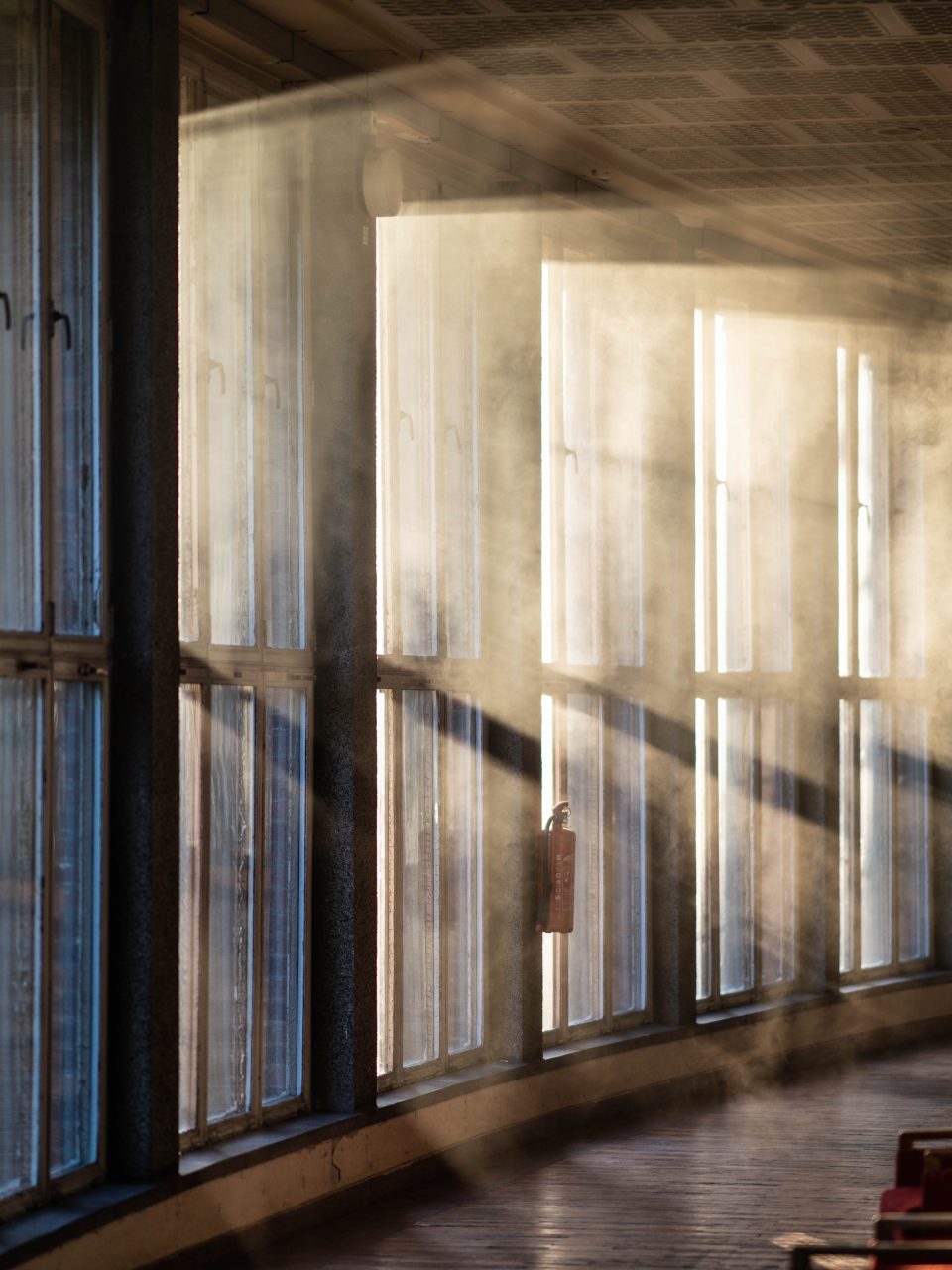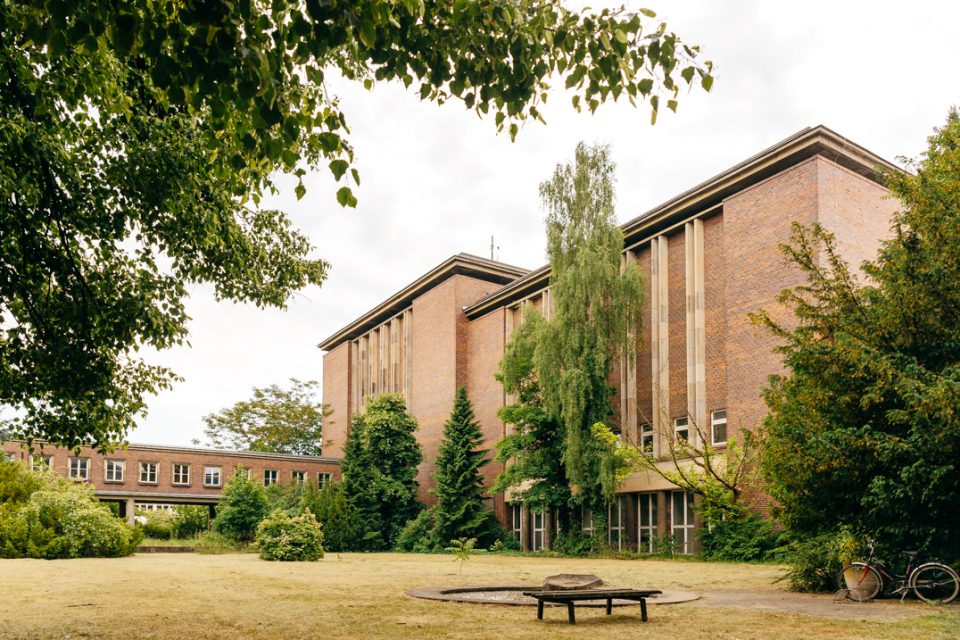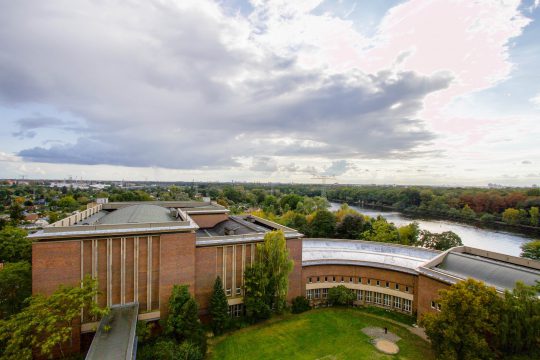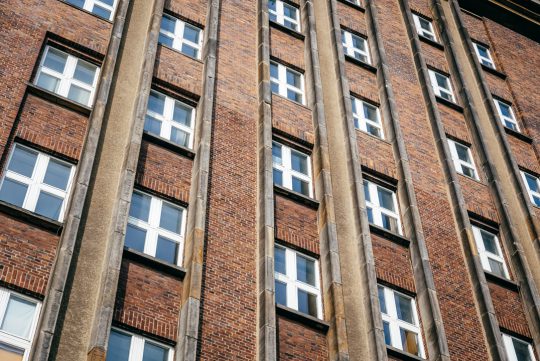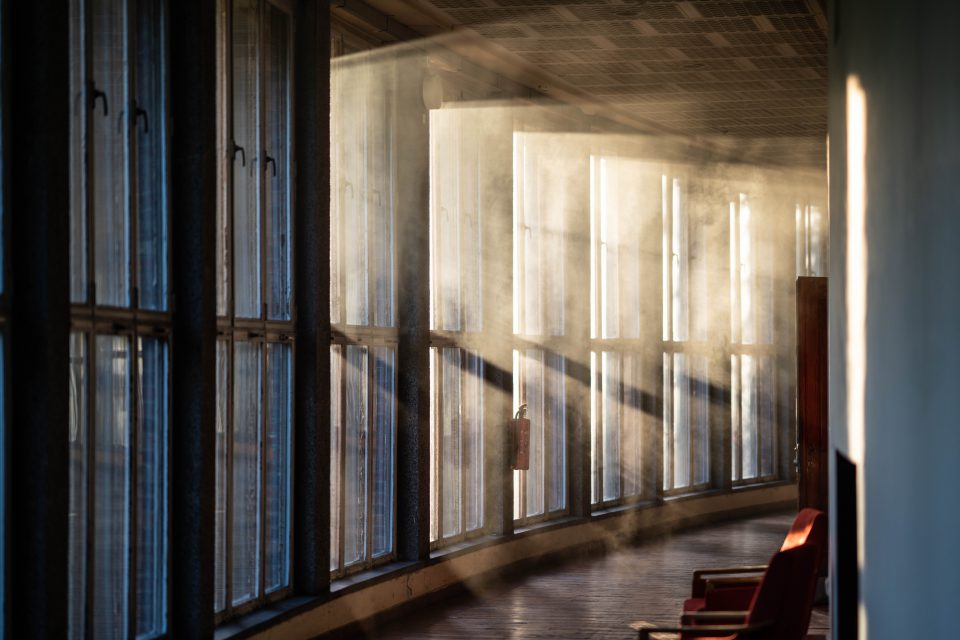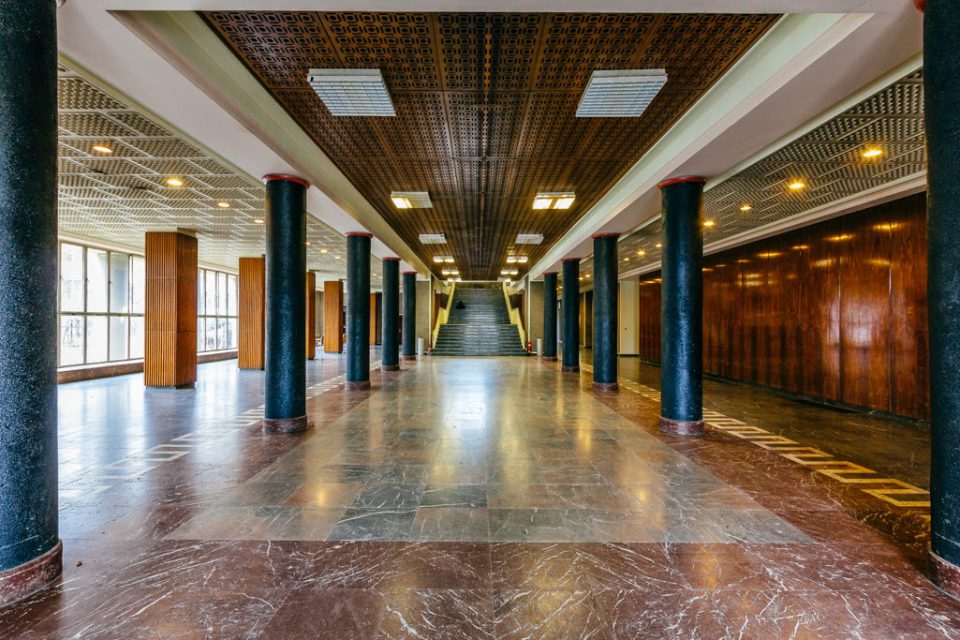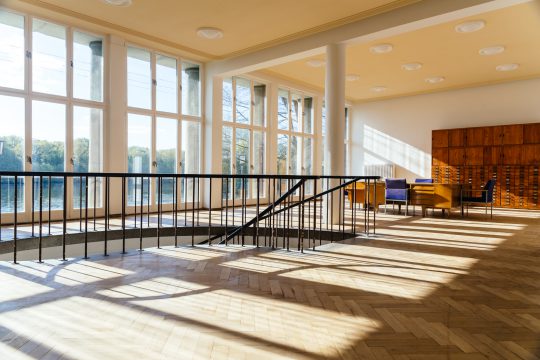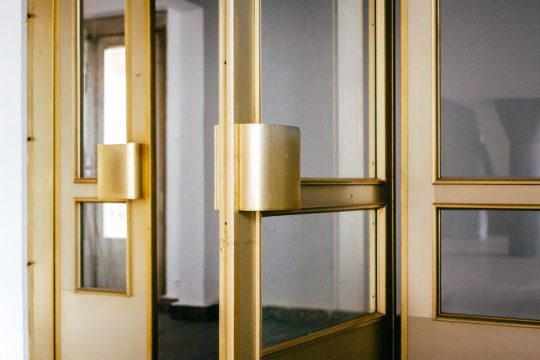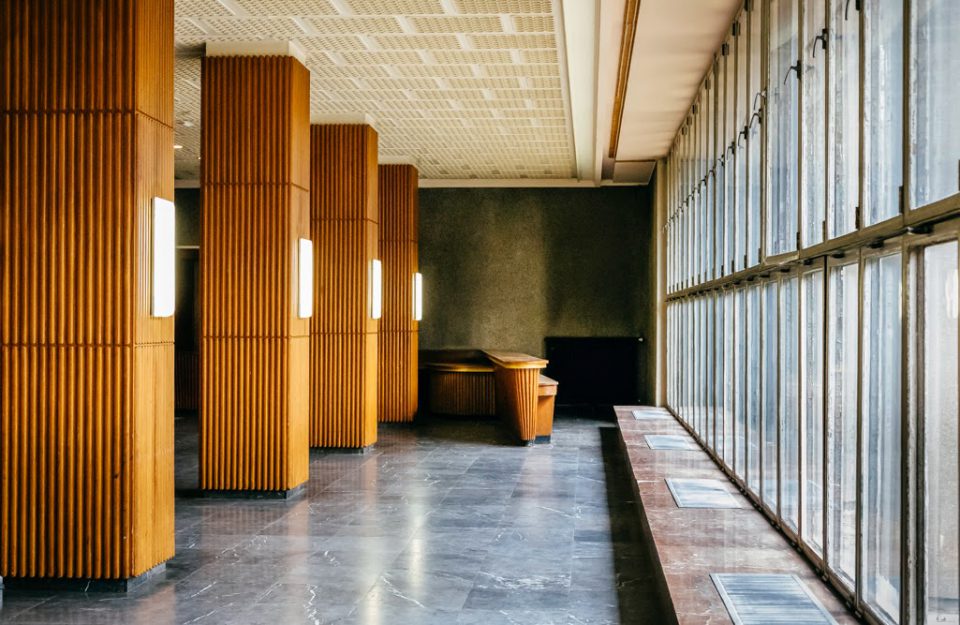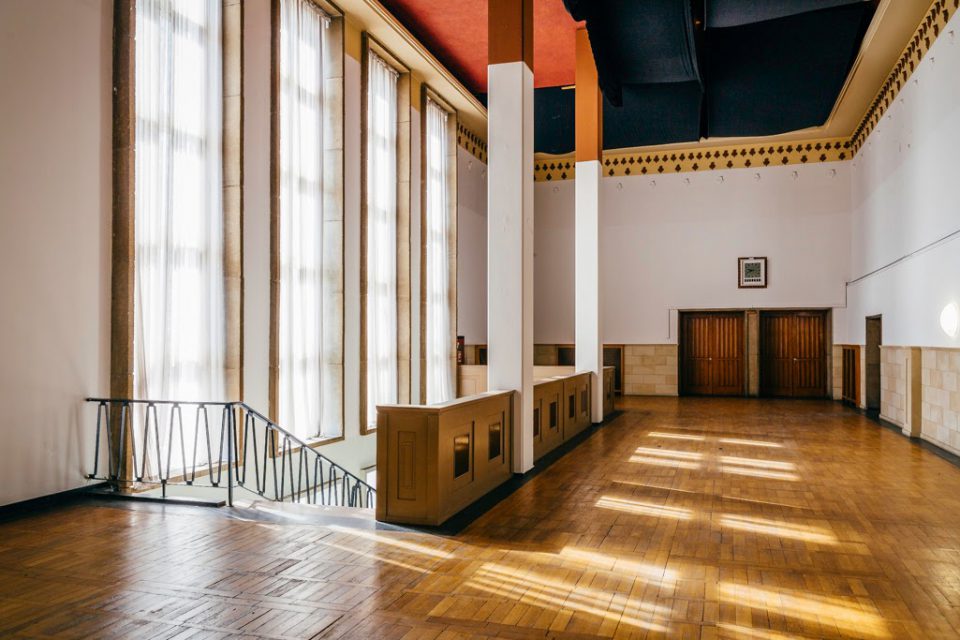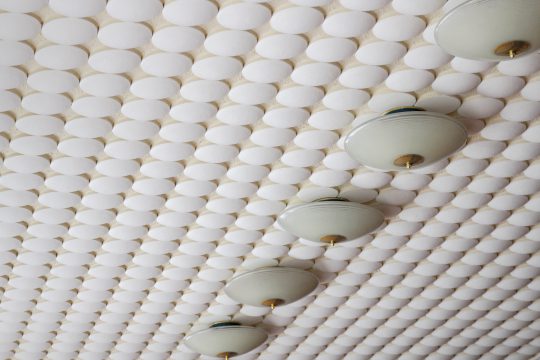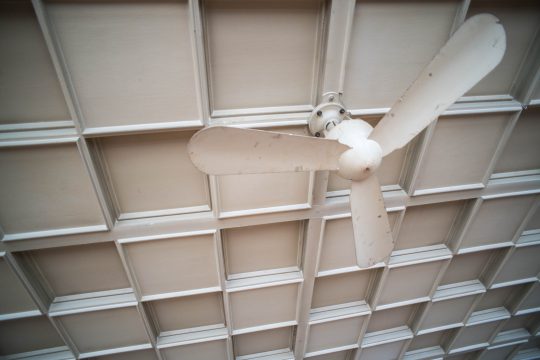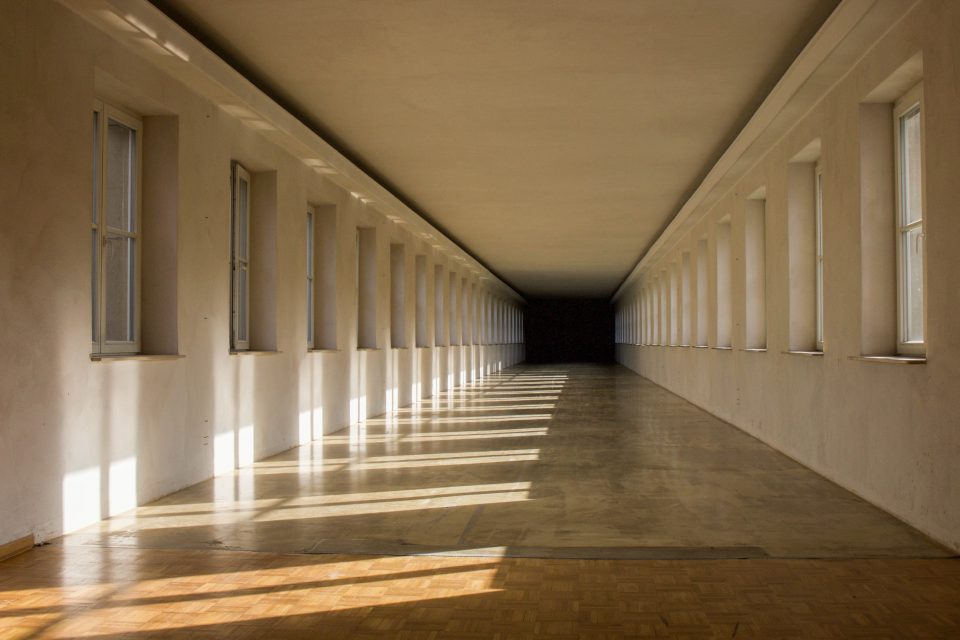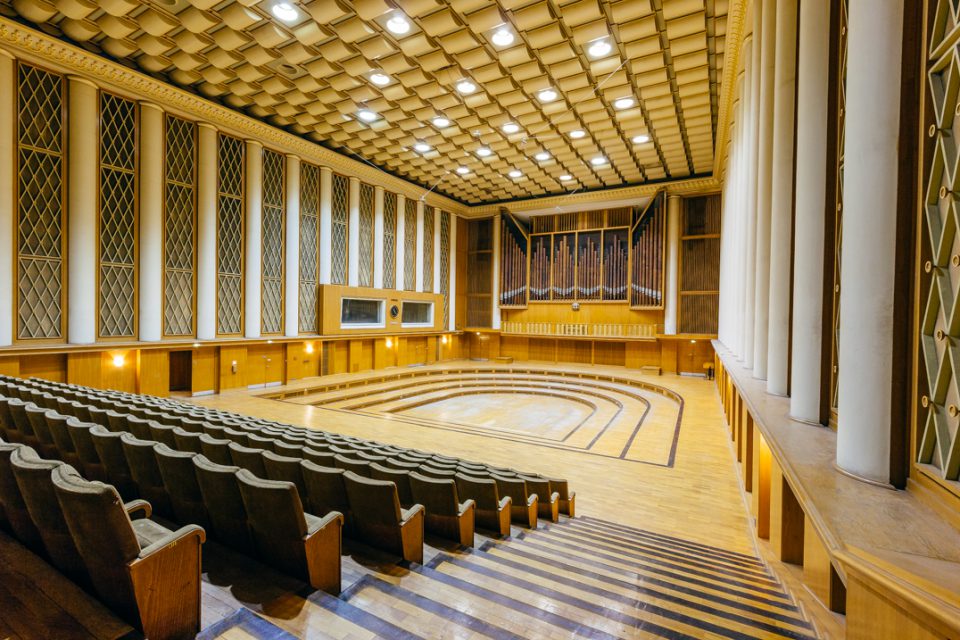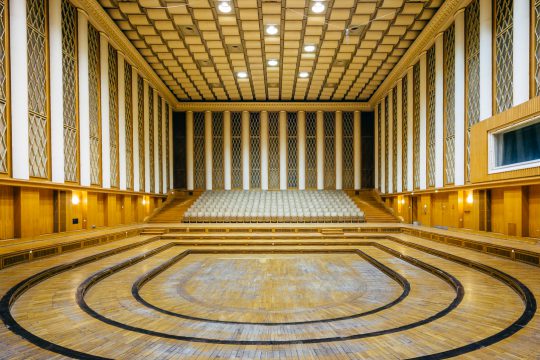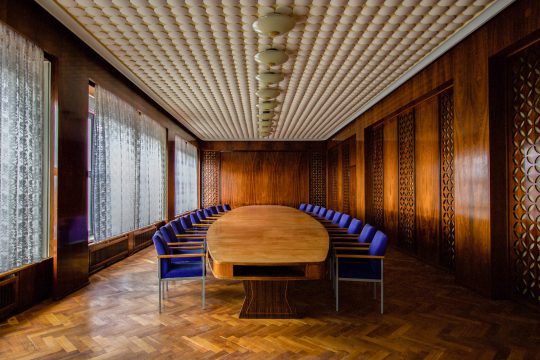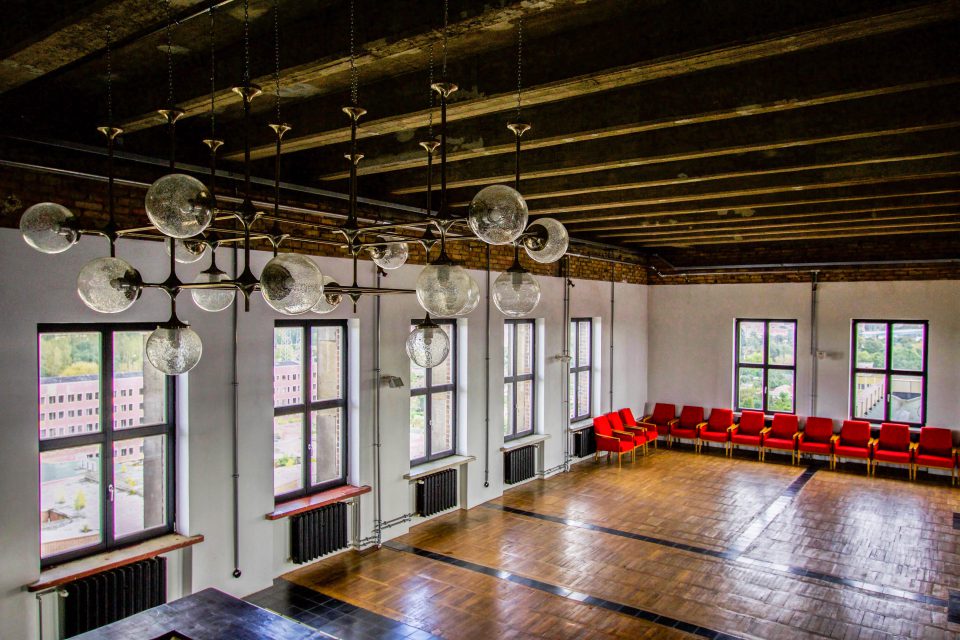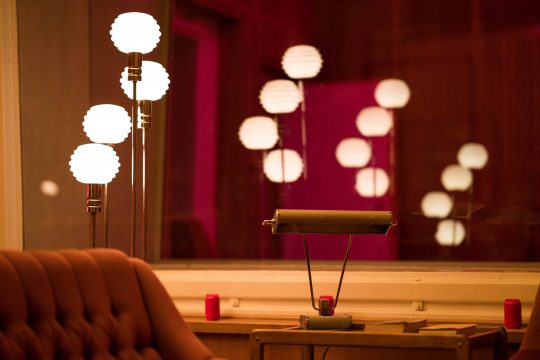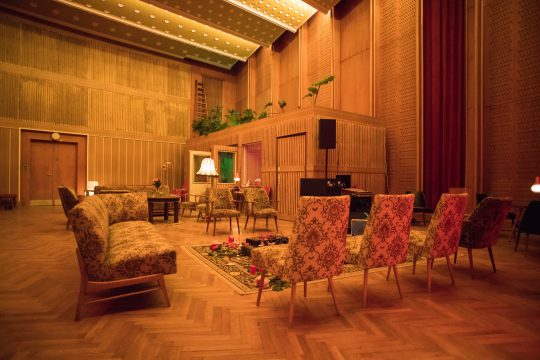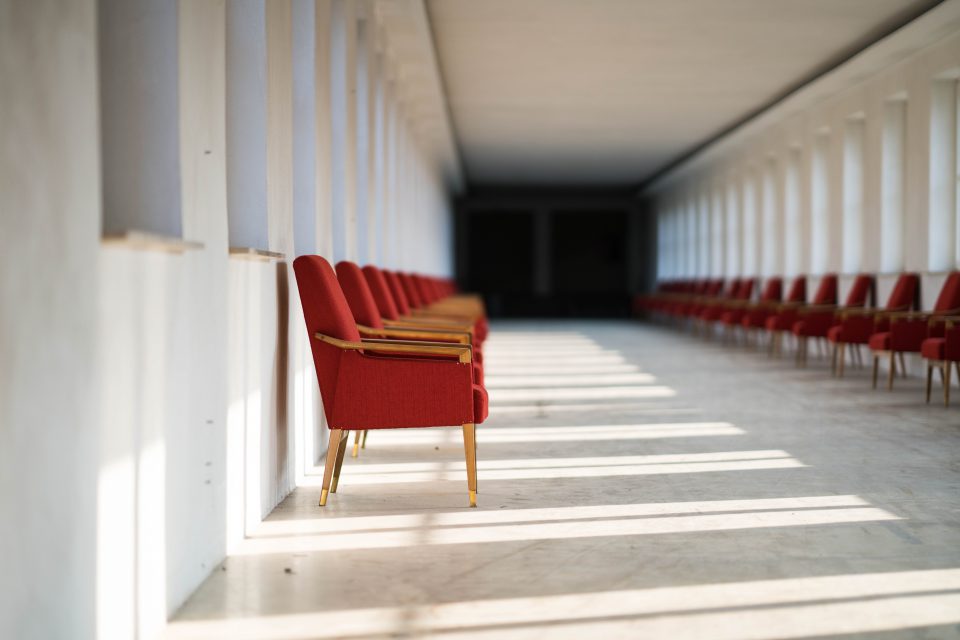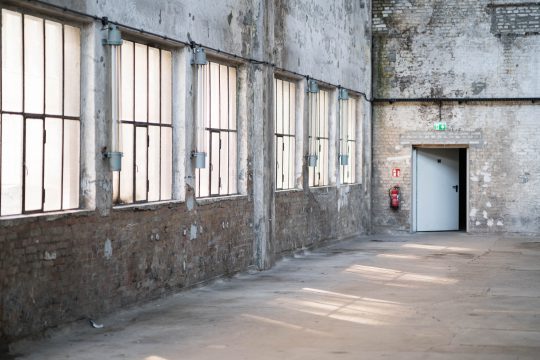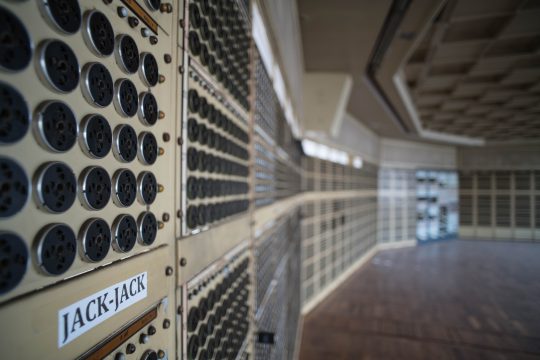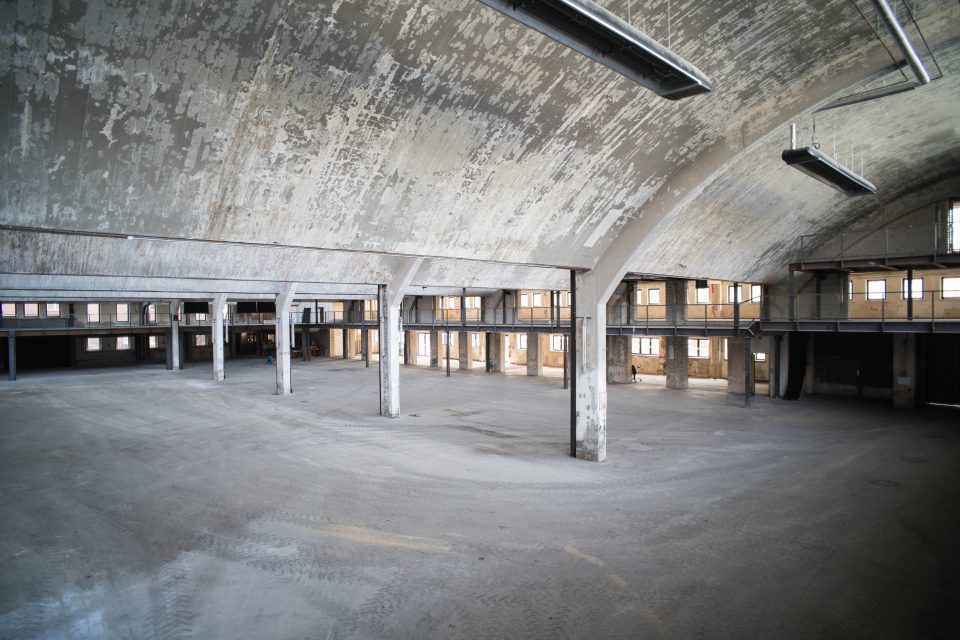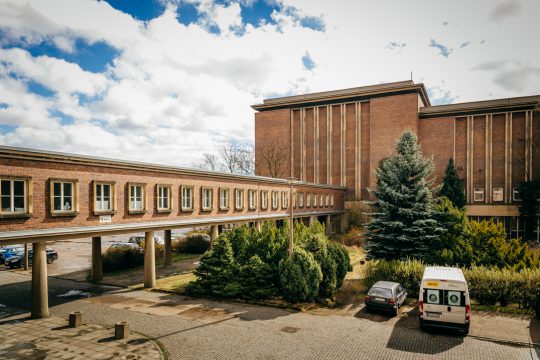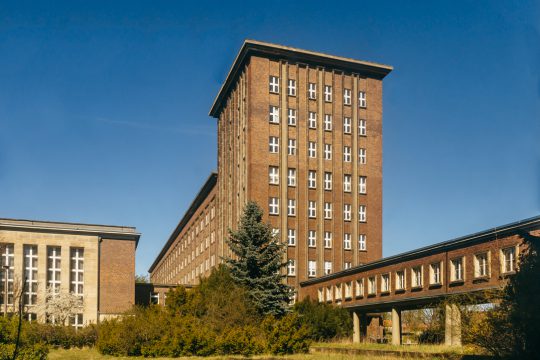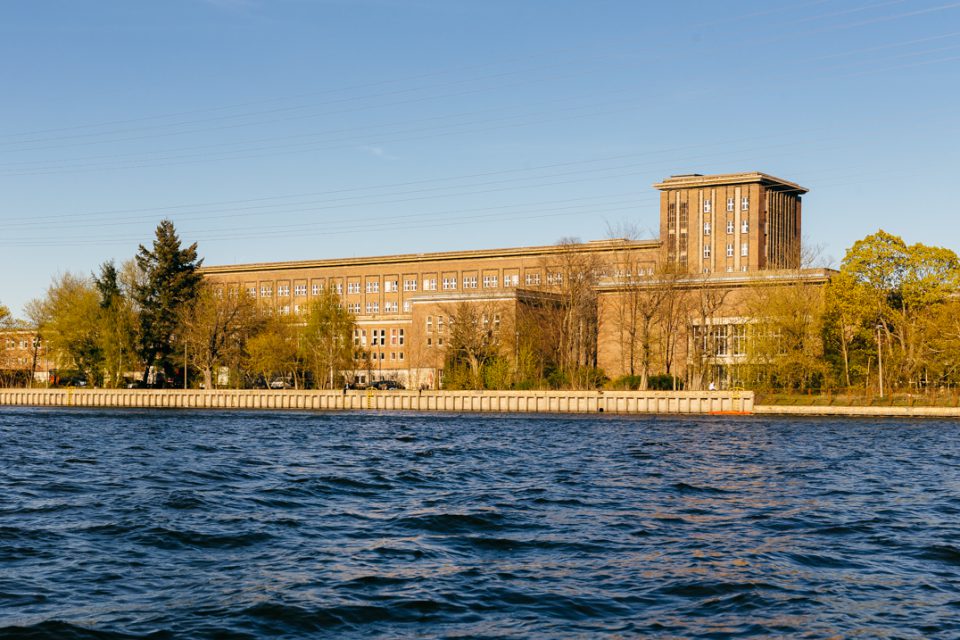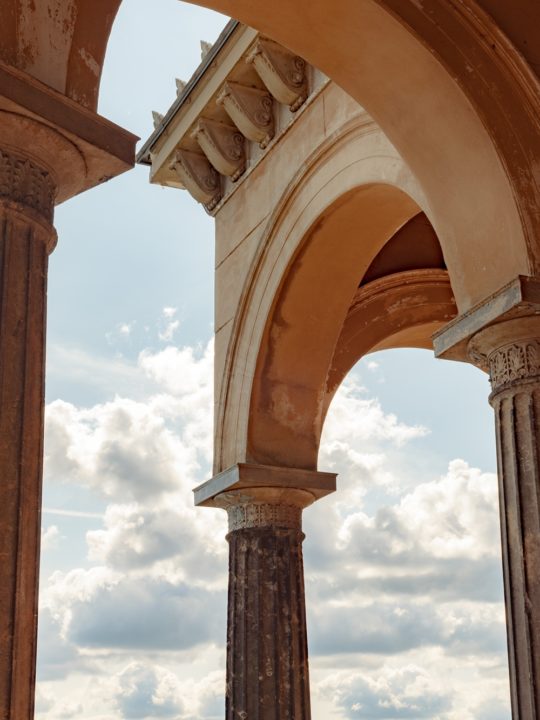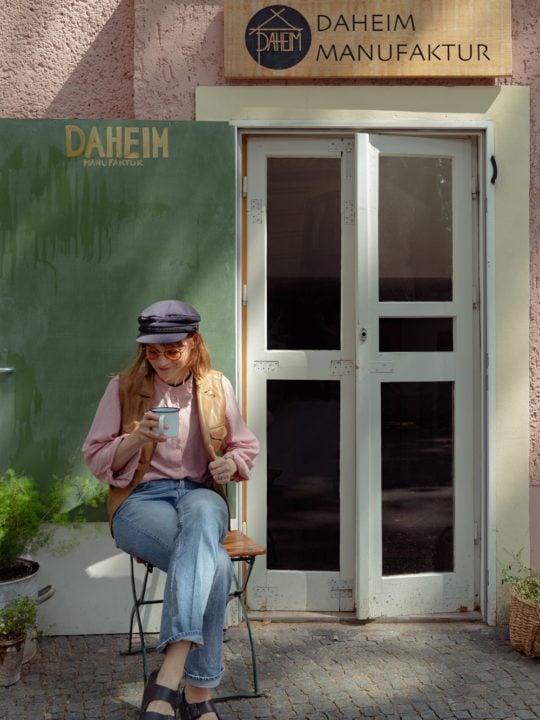FUNKHAUS BERLIN
Funkhaus is one of Berlin’s most iconic buildings. Located just south of Berlin on the banks of the river Spree in an industrial area, the enormous complex of several large brick buildings that was once the former GDR broadcasting studios resembles an abandoned military campus.
At first, visitors are blown away by the sheer appearance of the buildings – it’s massive and breathtaking. This awed impression continues as you go on exploring the vast complex, as you enter the buildings with its many studios and concert halls and walk down endless hallways. The prevailing history of the place is omnipresent, with all details telling of former grandeur.
A PLACE WITH AN ILLUSTRIOUS PAST
Funkhaus plays a vital role in Berlin’s cultural and political past. After WW2 ended and Germany was separated, East and West Berlin started their competition over which part of Berlin would become more prosperous. The radio program of the GDR was positioned as the antipode to western radio broadcasting and was aimed at the superlative, as radio was emerging as a battleground for political ideology.
Funkhaus can be seen as a symbol of the GDR’s wide-reaching ambitions, it was built to be the largest radio-broadcasting site in the world and apparently no expenses were spared. Designed by Bauhaus architect Franz Ehrlich, the complex that was built between 1952 and 1956 became the project of his life.
It was an ideal marriage of German functionality and Eastern decadence, an object where modernist, clear Bauhaus design met colossal soviet architecture. The whole complex is characterized by monumentality and the typically austere grandeur of Soviet architecture. Inside, marble from the former Reich Chancellery was used to build stairways, floors and walls were made from old-growth Russian timber that is now among of the rarest materials in the world. Staircases were built out of wood, stone and carpet to capture the different sounds made by steps.
What was exceptional is that is was built solely for the purpose of music, a joint effort of architects and acousticians to create a world-class broadcasting campus with studios designed to meet every need imaginable. It was a unique combination of design and acoustics back then. Design and materials were chosen to make the best sound experience possible and the complex’ structure is the clear result of function: smaller recording studios vary in shape following acoustic proportions, while the biggest broadcasting hall is designed as a room in room construction, sealing off the outer world completely and still a popular recording studio today because of its outstanding sound isolation and acoustics. Funkhaus offers numerous spaces designed for recording symphony orchestras, choirs, jazz ensembles, pop music or radio plays.
Funkhaus served as a propaganda mechanism, with high ranking officials and politicians regularly present. What was created was a high tension environment where censorship and spying was implemented in the construction and social activities, all behind the glamorous exterior and social life of the thousands of employees and families involved there. You still get a sense of it sometimes in the quieter, emptier passageways through the overall architectural similarity to Communist army bases.
WHERE MUSIC HISTORY IS STILL BEING WRITTEN
After the fall of the Berlin wall Funkhaus was virtually abandoned for a while, but luckily it has been brought back to life under a new ownership while staying true to its original musical and artistic purpose.
Even though it might feel like you are jolted back in time to the 1950s as the original interior and details were preserved, don’t underestimate the state-of-the art studios that it houses today, pairing historical detail with cutting-edge sound.
Originally designed with the single purpose of recording audio, Funkhaus still is a perfect environment for musicians to work and produce, offering incredible acoustic spaces and state-of-the-art musical equipment. It houses rehearsal spaces or studios from many artists such as Nils Frahm, who set up an analog studio there to exploit the unique acoustic properties of the building, or A-Ha, Sting, and the Black Eyed Peas who have recorded there in the past. Funkhaus offers spaces in all forms and sizes imaginable and is a treasure trove for musicians, sound designers, producers, film directors or performance artists.
Located in the outskirts of Berlin in an area that needs no consideration of neighbors yet still so close to the vibrant city center, it has developed into a vivid complex for recording and production, for concerts and festivals, large-scale club events or live performances, for both professionals and music enthusiasts. Head there for a concert, go on a guided tour through the premises or simply hang out in this unique atmosphere – there also is coffee and traditional German food in the GDR-style Milchbar or pizza from a Berlin favorite Zola.
In a nutshell: a hotbed of musical and artistic creativity, and a place where history is heavily present but unlike a museum it is still alive and growing. Berlin music history is still being written here.

